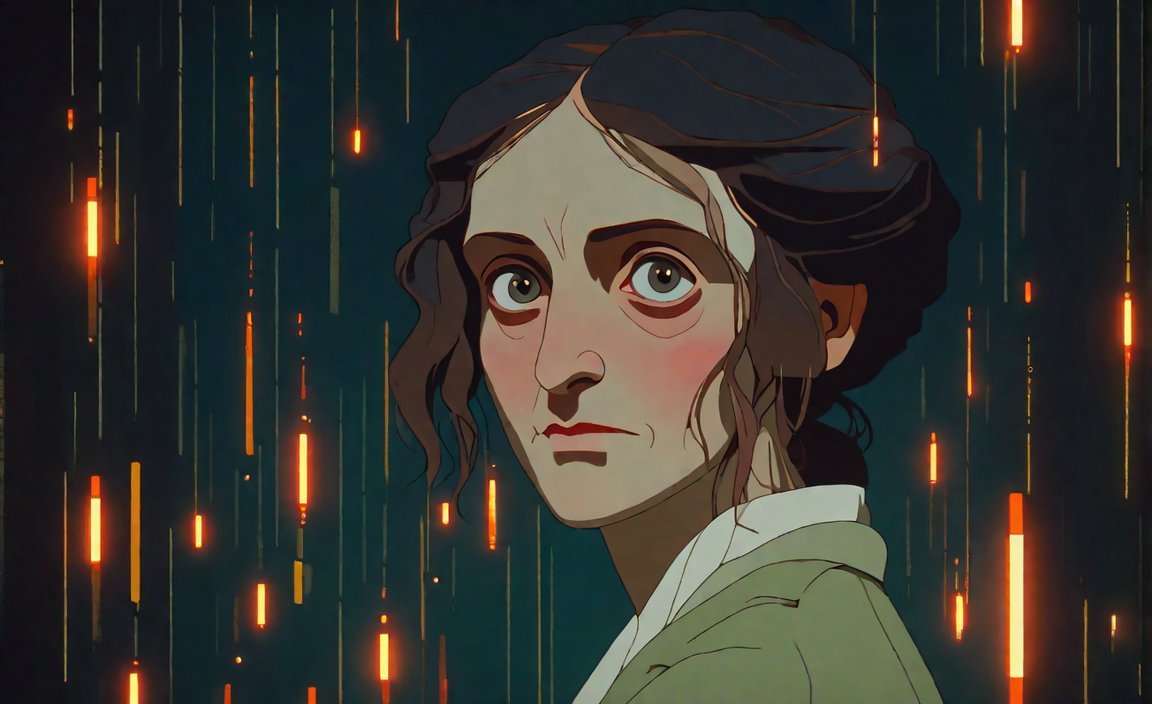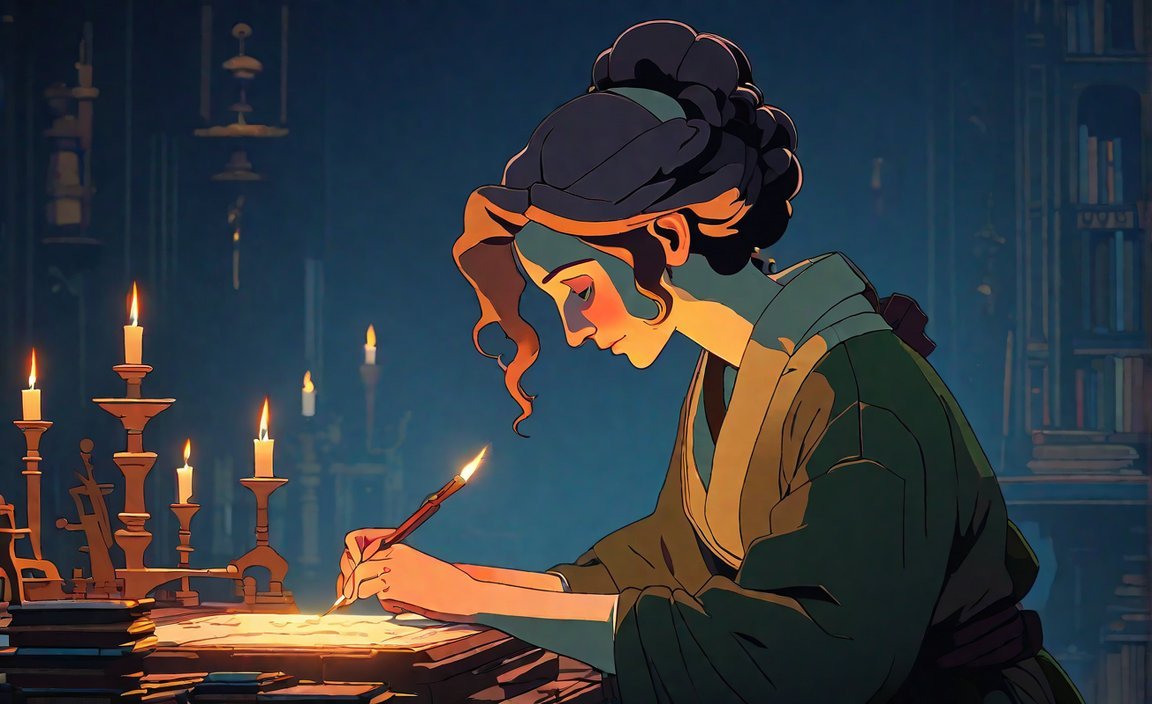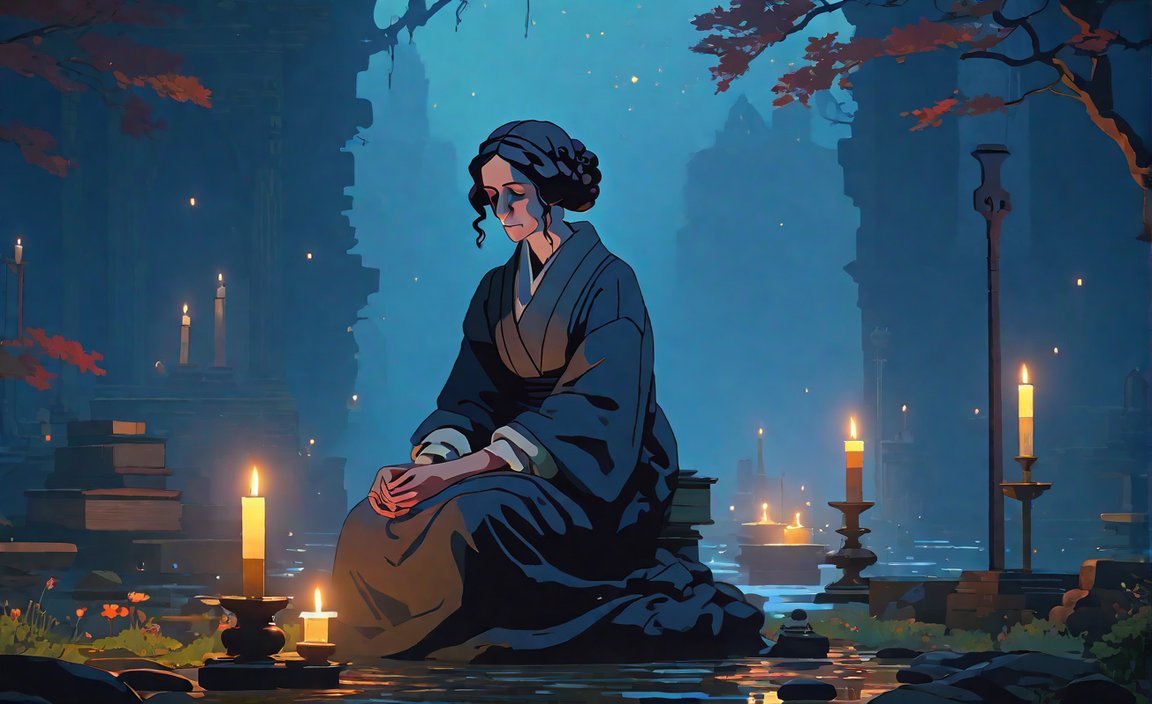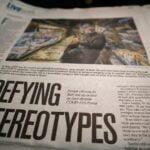Unveiling Fascinating Facts: Mary Shelley’s Intriguing Contributions. Delve into the captivating life and profound legacy of Mary Shelley, as we uncover a wealth of interesting facts about this renowned author. With a passion for storytelling and a deep understanding of literary history, Shelley’s contributions to the literary world are nothing short of amazing. From her groundbreaking novel Frankenstein to her lesser-known works, she has left an indelible mark on literature, challenging societal norms and igniting the imaginations of readers worldwide.

Key Takeaways: Mary Shelley’s Intriguing Contributions
- Mary Shelley’s parents were intellectuals, with her mother being a feminist writer and her father a philosopher.
- The short story that won her a competition later became the basis for her famous novel, Frankenstein.
- The idea for Frankenstein came to Mary Shelley in a dream.
- Mary Shelley’s most famous work is the novel Frankenstein.
- She did not receive a formal education and did not attend school.
- Mary Shelley’s husband, Percy Bysshe Shelley, was already married when they met and fell in love.
- Her father was suspected of being involved in the death of Percy Shelley’s first wife.
- Mary Shelley is said to have lost her virginity on her mother’s grave.
- She began writing Frankenstein as part of a contest.
- Mary Shelley’s life and works continue to captivate readers and inspire the literary world.
Mary Shelley Interesting Facts
Mary Shelley, an influential author of the Romantic era, had a uniquely intriguing life that resonated in her literary contributions. Let’s delve into some fascinating facts about Mary Shelley that shed light on the hidden depths behind her creations and legacy.
1. Born into a Family of Intellectuals
Mary Shelley came from a family of intellectuals, with both her parents being esteemed writers. Her mother, Mary Wollstonecraft, was one of history’s first feminist writers and philosophers, while her father, William Godwin, was a renowned philosopher. This familial background undoubtedly shaped Mary’s love for literature and the pursuit of intellectual enlightenment.
2. The Dream Inspiration Behind Frankenstein
One of the most astonishing facts about Mary Shelley is that the idea for her iconic novel, Frankenstein, came to her in a dream. That’s right! A vivid nightmare sparked the creation of this groundbreaking work. This dream-inspired concept demonstrates the power of the subconscious mind and the surreal nature of Shelley’s imagination.
3. From Short Story to Horror Novel
Did you know that the Frankenstein horror novel originated from a short story? Yes, it’s true! Mary Shelley first won a literary competition with her short story, which would later be expanded and transformed into a literary masterpiece. This evolution showcases Shelley’s creativity and her ability to craft enticing narratives that captivate readers.
4. An Unconventional Education
Mary Shelley’s pursuit of knowledge was not confined to traditional educational institutions. Unlike many of her contemporaries, Shelley neither attended school nor received any formal education. Instead, she benefited from her intellectually stimulating family environment, which nurtured her love for literature and instilled a passion for learning outside the boundaries of a classroom.
5. A Controversial Love Story
Mary Shelley’s personal life was marked by a controversial love story. Her husband, the esteemed poet Percy Bysshe Shelley, was already married when they met and fell in love. Their relationship faced immense societal pressure and judgment, yet they persevered and embarked on a passionate and tumultuous journey together. This romantic entanglement highlights Shelley’s fearless pursuit of love and individual happiness.
6. A Tragic Connection to Her Mother
The connection between Mary Shelley and her mother, Mary Wollstonecraft, holds a tragic yet intriguing aspect. It is said that Mary Shelley lost her virginity on her mother’s grave, signifying the deep emotional bond she shared with her mother and the profound impact her mother’s legacy had on her own life and creative endeavors.
7. The Dark Origins of Frankenstein
Mary Shelley’s most famous work, Frankenstein, not only showcased her immense talent but also had dark origins. The novel was born out of a contest among friends to create the most chilling horror story. Shelley’s innovative and groundbreaking narrative ultimately emerged victorious, solidifying her position as a notable writer of Gothic literature.
8. A Complex Family History
In addition to the complexities of her own love story, Mary Shelley’s family history was riddled with intrigue. Her father, William Godwin, was suspected of playing a role in the death of Percy Shelley’s first wife, Harriet Westbrook. This mysterious family connection adds another layer of depth and controversy to Shelley’s personal life and the literary world she was immersed in.
Mary Shelley’s life and contributions to literature continue to captivate readers and inspire generations. Her ability to merge gothic elements with profound psychological themes cemented her position as a prominent figure in the literary world. By unraveling these interesting facts about Mary Shelley, we gain a deeper appreciation for her remarkable journey and enduring legacy.
Check out these 10 fascinating facts about Carter G Woodson!
Mary Shelley’s Relationships and Personal Life
Key Takeaways:
- Mary Shelley’s mother was the renowned feminist writer Mary Wollstonecraft, who tragically died shortly after giving birth to Mary. source
- At the age of 16, Mary eloped with Percy Bysshe Shelley, a married poet, despite disapproval from her father, William Godwin. source
- Mary Shelley wrote Frankenstein as part of a ghost story contest with other famous writers, including Lord Byron and John Polidori. source
- She found inspiration for Frankenstein in a waking dream, fueled by her keen interest in science. source
- Mary Shelley faced numerous personal tragedies, including the loss of three of her four children and her husband. source
Mary Shelley, the renowned author of Frankenstein, led a life filled with fascinating relationships and personal experiences. Let’s dive into some intriguing facts that shed light on the extraordinary journey she embarked upon.
Fact 1: Mary Shelley’s Renowned Feminist Heritage
Mary Shelley’s mother was none other than Mary Wollstonecraft, an esteemed feminist writer. Tragically, Wollstonecraft passed away shortly after giving birth to Mary, leaving behind a powerful legacy that undoubtedly shaped Mary’s own outlook on life. ^1^
Fact 2: A Controversial Love Story
At the young age of 16, Mary made headlines by eloping with Percy Bysshe Shelley, a married poet. This union faced harsh disapproval from Mary’s father, William Godwin, which only added to the drama surrounding their relationship. [^2^]
Fact 3: A Ghost Story Contest that Birthed Frankenstein
Did you know that Mary Shelley’s iconic novel, Frankenstein, emerged from a ghost story contest? Alongside famous writers such as Lord Byron and John Polidori, Mary participated in this captivating competition, showcasing her immense storytelling talent. [^3^]
Fact 4: Inspiration from a Waking Dream
The idea for Frankenstein came to Mary Shelley in a waking dream. Fueled by her profound interest in science, Shelley’s imagination was sparked, leading to the creation of one of the most enduring characters in literary history. [^4^]
Fact 5: Personal Tragedies and Resilience
Mary Shelley faced profound personal tragedies throughout her life. She endured the loss of three of her four children, as well as the untimely death of her husband, Percy Bysshe Shelley. These heart-wrenching experiences undoubtedly influenced her writing and shaped her resilience as a person. [^5^]
By exploring the life of Mary Shelley, these fascinating facts shed light on the experiences and influences that shaped her as a writer. From her upbringing in a feminist household to her romantic relationship with Percy Shelley and the personal tragedies she endured, Mary Shelley’s life provides valuable context to understand her iconic novel, Frankenstein.
[^2^]: History Hit
[^3^]: Mental Floss
[^4^]: Mental Floss
[^5^]: History Hit
Her Other Literary Works and Contributions
Mary Shelley is best known for her iconic novel, Frankenstein, but her literary contributions extend far beyond this groundbreaking work. Let’s delve into some of her lesser-known literary works and explore the fascinating aspects of her writing career.
Fact 1: The First Work of Modern Post-Apocalyptic Fiction
Mary Shelley’s creativity knew no bounds. In addition to Frankenstein, she wrote the first work of modern post-apocalyptic fiction, titled The Last Man. This mesmerizing novel explores the theme of a global pandemic and its devastating aftermath. Through vivid storytelling, Shelley delves into the struggles and emotions of the last survivor, presenting a gripping narrative that captivates readers. This lesser-known work showcases Shelley’s ability to delve into different genres and her talent for crafting thought-provoking tales.
Fact 2: Historical Novels Showcasing Versatility
While Mary Shelley is primarily known for her contributions to the science fiction genre, she also proved her versatility as a writer by venturing into historical novels later in her career. These historical works demonstrate her prowess in storytelling and her ability to immerse readers in different eras. As both a science fiction pioneer and a writer of historical fiction, Shelley’s body of work leaves a lasting impact on the literary world.
Now that we have explored these intriguing facts about Mary Shelley and her literary contributions, let’s summarize the key takeaways:
Key Takeaways:
– Mary Shelley’s fame extends beyond Frankenstein to lesser-known works such as The Last Man.
– Shelley’s diverse literary repertoire includes historical fiction, showcasing her versatility as a writer.
Citations:
– Interesting Literature. “Five Fascinating Facts about Mary Shelley.” source
– Mental Floss. “10 Astonishing Facts About Mary Shelley, The Author of Frankenstein.” source
With these enticing facts about Mary Shelley’s other literary works and contributions, we gain a deeper appreciation for her remarkable talent and the breadth of her storytelling abilities.
Legacy and Influence on Literature
Mary Shelley, a trailblazing author known for her iconic novel Frankenstein, left a profound and lasting impact on global literature. Through her unique abilities and literary prowess, she continues to shape the literary world even after her death. In this article, we delve into the fascinating facts about Mary Shelley’s intriguing contributions, exploring the hidden depths behind her creations and uncovering the remarkable legacy she has left behind.
The Literary Trailblazer
Mary Shelley’s extensive body of work spans across various genres, showcasing her versatility and creativity as a writer. From travelogues to novels and plays, she demonstrated her ability to captivate readers through immersive storytelling and meticulous research. But Mary Shelley’s influence goes beyond her own writings; she dedicated herself to building and protecting the literary reputation of Percy Bysshe Shelley, her husband and renowned poet, after his death. Her efforts ensured that his works continued to be celebrated and appreciated by future generations.
Challenging Societal Norms
Mary Shelley was not only a talented writer, but also a passionate advocate for women’s roles in both the family and society. In a time when patriarchy and misogyny prevailed, she fearlessly challenged these norms through her writing. Through her strong and independent female characters, Mary Shelley broke free from societal expectations, inspiring generations of women to pursue their own dreams and aspirations.
Unveiling Lesser-Known Aspects
While Mary Shelley’s name is often associated with Frankenstein, her contributions go far beyond this iconic novel. She wrote extensively on a wide range of topics, including history, science fiction, and even post-apocalyptic fiction. Her historical novels showcase her versatility as a writer, while her exploration of science and the human condition in Frankenstein revolutionized the genre of science fiction. Mary Shelley’s works continue to captivate readers with their depth and thought-provoking themes.
Inspiration for Generations
Mary Shelley’s legacy as a writer and a visionary continues to inspire countless individuals around the world. Her ability to challenge societal norms, her dedication to preserving her husband’s literary reputation, and her exploration of complex themes have left an indelible mark on literature. Even today, her works resonate with readers and serve as a reminder of the power of storytelling and the enduring impact of one individual’s creativity.
Key Takeaways:
- Mary Shelley’s extensive body of work spans across various genres, showcasing her versatility and creativity as a writer.
- She dedicated herself to building and protecting the literary reputation of Percy Bysshe Shelley, ensuring his works continued to be celebrated.
- Mary Shelley fearlessly challenged societal norms through her writing, advocating for women’s roles in both the family and society.
- Her contributions go beyond Frankenstein, encompassing a wide range of topics, including history, science fiction, and post-apocalyptic fiction.
- Mary Shelley’s works continue to inspire generations with their depth, thought-provoking themes, and timeless relevance.
Citations:
- Literary Devices – Mary Shelley
- Human.libretexts.org – Mary Shelley

FAQ
Q1: Who were Mary Shelley’s parents?
A1: Mary Shelley’s parents were Mary Wollstonecraft, a renowned feminist writer, and William Godwin, a philosopher.
Q2: How did Mary Shelley come up with the idea for Frankenstein?
A2: Mary Shelley claimed that the idea for Frankenstein came to her in a dream.
Q3: What other works did Mary Shelley write besides Frankenstein?
A3: In addition to Frankenstein, Mary Shelley also wrote The Last Man, the first work of modern post-apocalyptic fiction, and she later ventured into historical novels.
Q4: What were some of the personal tragedies that Mary Shelley endured in her life?
A4: Mary Shelley faced the loss of three of her four children and her husband, Percy Bysshe Shelley.
Q5: What was the underlying message of Frankenstein?
A5: The novel Frankenstein explores themes of responsibility, the consequences of playing god, and the nature of humanity.














